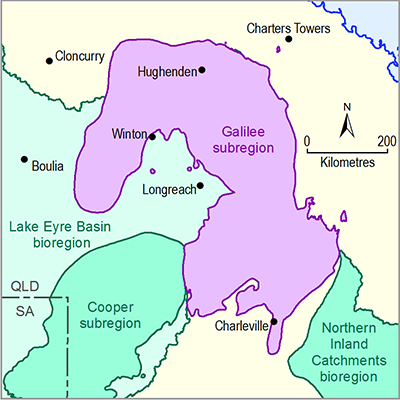- Home
- Assessments
- Bioregional Assessment Program
- Galilee subregion
- 2.6.1 Surface water numerical modelling for the Galilee subregion
- 2.6.1.1 Methods
- 2.6.1.1.1 Selection of surface water model
Surface water flow is influenced by coal mining directly through interception and flow diversion and indirectly by changes in groundwater level. Companion product 2.3 for the Galilee subregion (Evans et al., 2018b) indicates that large coal mining development has the potential to directly affect the regional groundwater system, and that this direct effect can propagate through to the alluvium of the Belyando River and its tributaries via a change to baseflow. Any impact on the groundwater in the alluvium of those rivers in turn has the potential to affect streamflow (and therefore surface water resources) in the stream networks of the Belyando river basin.
The Belyando is an unregulated and variably losing–gaining river, where it loses water at high flows and gains water at low flows (see Section 2.1.5 in companion product 2.1-2.2 for the Galilee subregion (Evans et al., 2018a)). The simulation of river management or routing of streamflow through the river network with a river model is not necessary as the salient features of streamflow can be simulated solely with a rainfall-runoff model (see companion submethodology M06 (as listed in Table 1) for surface water modelling (Viney, 2016)).
For these reasons, surface water resources in the Galilee subregion are modelled using the Australian Water Resources Assessment landscape model (AWRA-L) only. Gridded output from AWRA-L is accumulated to the model nodes without any lagged routing; that is, there is no explicit transmission delay algorithm.
In all other respects, the surface water modelling in the Galilee subregion follows the methodology set out in companion submethodology M06 (as listed in Table 1) for surface water modelling (Viney, 2016).

